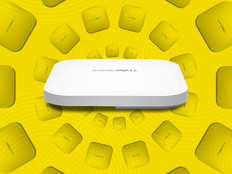FAULCONER: This entire solution was built to address an area we thought the rest of the industry was missing. Yes, every school needs coverage across campus now. Yes, almost every school needs bandwidth to support the amount of learning taking place online and on a significantly greater quantity of devices compared with three years ago. But having the latest, greatest technology in every classroom doesn’t always equal a good client experience. The network being “up” doesn’t necessarily equal “good.”
With Juniper’s AI-driven network, we can understand what a student or faculty member is experiencing on any network-connected device. If that experience doesn’t meet the user’s expectations, the AI engine at the core of this network solution proactively identifies the issues that directly impact classroom learning, whether it’s wireless coverage gaps in classrooms, bad cables attached to switches or APs, or firmware issues on network hardware.
EDTECH: What is unique about K–12 IT infrastructure?
FAULCONER: Today, nearly every school uses wireless as the primary access layer for Chromebooks, tablets, smart screens and other educational technology. Combine that with one-to-one programs and bring-your-own-device programs, and we have seen an explosion of devices in classrooms. Even activities like online testing are now taking place predominantly over Wi-Fi.
The margin for negative network performance in schools has never been so razor thin. With so much learning taking place online, schools and districts cannot afford to be constantly troubleshooting, diagnosing or recreating negative events on the network to understand what to fix. Access points and switches, although key components for classrooms that use those devices, should not be something you have to continually troubleshoot. The way Juniper is using AI to constantly and consistently improve network performance can take that off the plate of school IT administrators.
DISCOVER: Partnerships drive innovation and success for this K–12 district.
EDTECH: How does real AI specifically benefit K–12 institutions and IT teams?
FAULCONER: The focus of this AI-driven solution is, how can this network improve to improve that client experience? With the AI engine constantly asking that question, there are so many ways that this solution specifically benefits K–12 and education-based customers.
With any other network solution, when someone complains, “The Wi-Fi sucked on Friday,” you have to go through the process of recreating that event and see if you can find what went wrong. With Juniper’s AI-driven solution, the network can understand in real time when an event doesn’t meet expectations. IT professionals can see exactly what event took place when network performance didn’t meet expectations. They can also see that the AI engine dynamically captured the packets around that event and stored them in the microservices cloud for analysis. If IT staff members don’t want to look at those packets, Marvis — the virtual network assistant — can explain what happened with that client and what needs to be fixed. The process of recreating events for troubleshooting is now a thing of the past. This is just one feature, but it is a huge testament to the time savings that using real AI with Juniper offers.
MORE ON EDTECH: Networks evolve to support a changing world.
EDTECH: How does the use of real AI improve students’ network experience?
FAULCONER: By using Juniper’s AI-driven networking solution, schools are putting something in place that is constantly looking at the network and asking, “How can we improve the network experience on that student device?” Or if a student’s experience isn’t what IT teams want it to be, how do they know what to fix? That’s what Juniper is looking to address.
Brought to you by:










